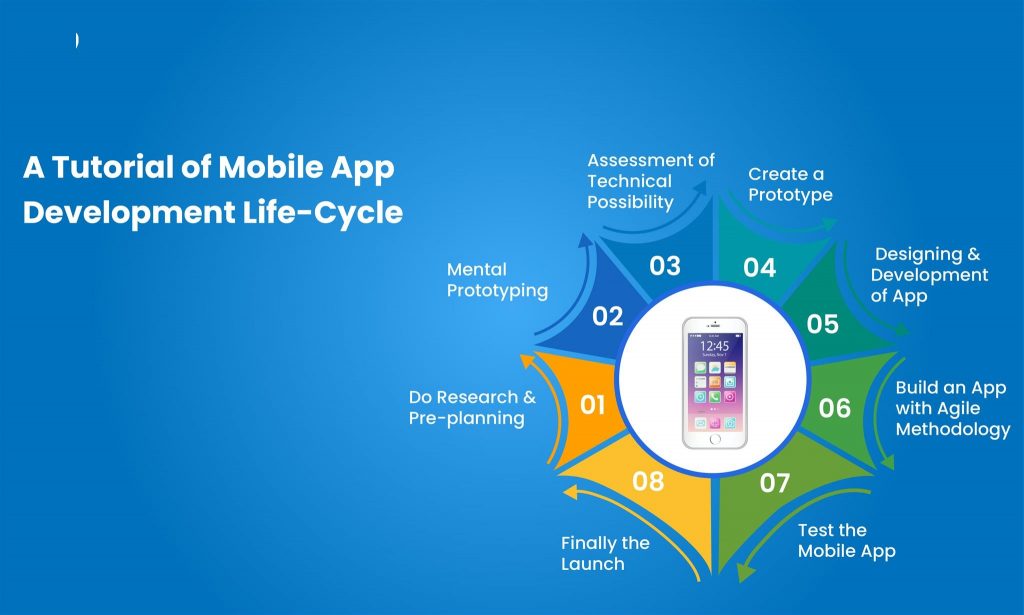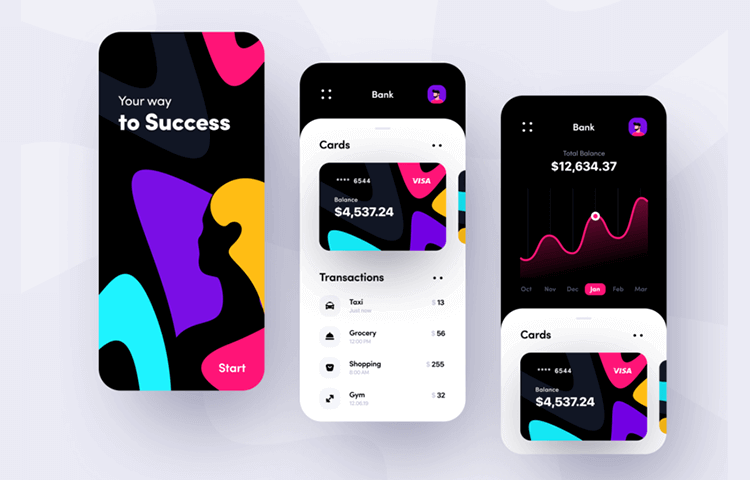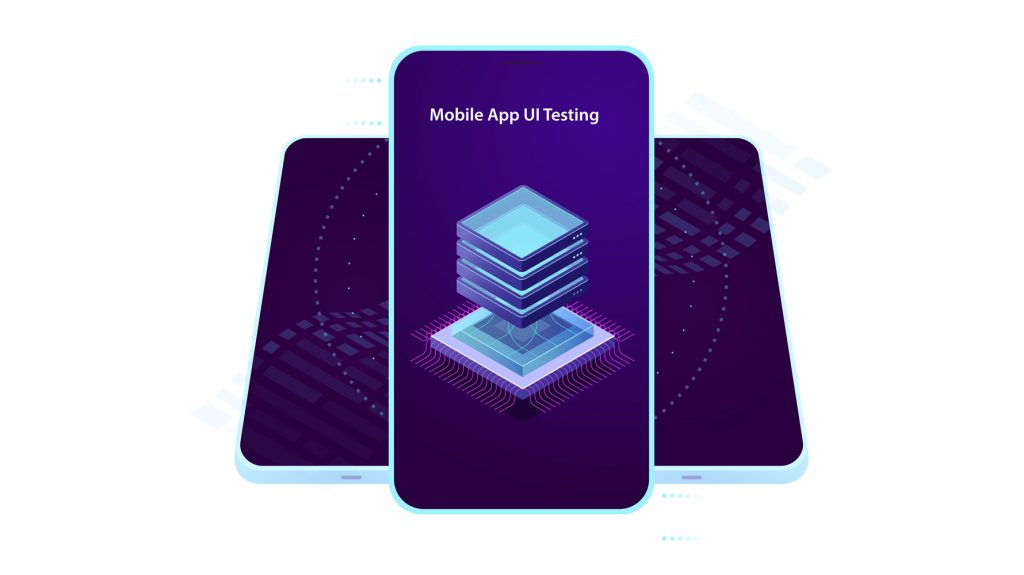Understanding Important Aspects of Mobile App Development Lifecycle
Mobile Apps have become essential in today’s world. But not all applications are successful. If you aim to have a successful mobile application, certain things must be kept in mind. Engaging the right app developer and ensuring he follows the necessary development process is crucial.
Like all forms of software developments, mobile apps, too, have a development lifecycle. Let us dive into the world of mobile app development lifecycle.

What is a Mobile App Development Lifecycle?
Mobile application development, as we know, is the process of creating software apps that are available on a mobile device. Hence, the mobile development lifecycle is a sequence of different activities performed by the app developers to bring to existence a quality app.
Why is Mobile Development Lifecycle important?
Without proper study and testing, the application will most likely fail due to different technical, developing issues. Mobile application development can become a complex undertaking. Having a pre-defined set of procedures helps in easing the app creation process. Following the process will ensure a winning application for your entity.
What are the stages involved in a Mobile App Development Lifecycle?
The Mobile Development Lifecycle includes the following stages
1.Planning and Research
In order to develop an application, there must be a laid out idea about it. Set a clear view of the goal and purpose to be achieved. Arranging the plan will help give the creators the bigger picture.
It will provide a fresh and new perspective, as well. Analyzing the 5 W’s-what, why, who, when, and where-will clarify the aim. Researching about the clients and competitors can provide necessary points to improve and make your product unique and appealing. By this stage, the developers do comprehensive drafting.
2. Design
Designing the application is a key feature. It includes the entire appearance and architecture of the app. The designers have in mind a design that consists of the architecture, modules, data for the system, and interface. A mobile app must have a capturing app icon. System design will give detailed information on the entities required for the app. Wireframing is a basic visual representation of elements on a website.

It marks the layout and location of the page that will help you simplify communication and development. User interface design is the process that builds easy utilization for the user. The designer has to make sure that the application has:
- Convenience to use
- Flexibility
- Modest and aesthetic design
- The pattern for the user to recognize and differentiate
- To help recover from errors
- User control and freedom
- Standard matching the competitors
- User-friendly directions
When it comes to design, it is best to be innovative and unique to attract more users.
3. Development.
This is the stage where the key use for the application is built. It includes coding and prototype.
Coding is the programming language that makes the application or software play out as desired. Once coding is done, developers make a prototype. A prototype is the preliminary model of the application. Creating a prototype can help the creators detect malfunctions and errors. There are two phases of prototyping for the development of mobile apps
- Alpha phase
This phase aims to answer the question, “Will the application work?”. The prototype is still raw. In this phase, the developers focus on the basic functionalities of the app. By the end of this phase, one aims to get rid of all the basic errors and failures.
- Beta phase
In this phase, the prototype is given to selected clients and users. They then provide the creators and team performance feedback. Changes are then made according to the feedback.
The designers give importance to the overall app design in the phase. They incorporate additional features for the user’s convenience. In this phase, the final assessment for the design, features, and the final product is done.
4. Testing
Although after the development stage, the app is ready, there may still be small and definitive errors. Errors can exist even after the production and prototype. In the testing stage, the creators have to check the compatibility of the app.

Thorough security checks of the service and performance have to be made. All functionalities should work as expected. Make a clear verification to ensure that the app meets all the necessary requirements. Testing before launching the app is cost-effective and saves the image and reputation of the app. Developers repeat the prototyping and testing phase until the app is finally ready.
5. Deployment
Deployment is when the app is available in the market to the users. This stage is resource-intensive. After a series of coding, prototyping, testing, and collecting feedback, the app becomes a developed system. The app is made available to the world through different app stores.
Rules and regulations of the app are set. The goal is to reach the utmost number of people. Creating a space for feedbacks show that the app is willing to improve and grow. The app should be available to everyone. Set an accessible place for the official launch to invite a greater audience.
Prepare brochures, articles, and posters engagingly and appealingly to attain people’s interest. Be ready to describe your app in just two words. It is one of the smartest strategies that is used by business investors. They ask the creators to represent their product in two words alone. It shows how well one knows their product offerings and can easily attract the audience.
6. Maintenance
The app development work does not end after the launch. The development and maintenance of an app is a continuous process. After you launch the app, there will be numerous feedbacks. Changes and security patches are made according to the usage of the app. Maintenance also includes the marketing of the app.
Advertising, press releasing, social media advertising, promotional videos, and such come under this stage. The creators make sure to highlight their features to attract users. Malfunctions and errors may come up from time to time. Hence, constant updates are imperative. The team must put in dedicated time and work to better their mobile application.
Give Life to your App with a Robust Mobile App Development Lifecycle Process!
The Mobile App Development Lifecycle is the process that every mobile application has to go through. The lifecycle directs the functionalities, life span, battery impact, and memory usage of the mobile application. One must ensure that they engage the right team for your app development needs.
Mobile App Development becomes convenient with Sysbunny!
Approach the app developers at Sysbunny for your app development services for your entity. We implement every step in the mobile app development cycle with utmost precision and expertise. Contact our professionals today!

Have an Idea?
Are you on a expedition to find a mobile app development company that can create an app that will lead your business towards the pinnacle of success? Sysbunny is the company you must trust.. Contact Usor Email Us
